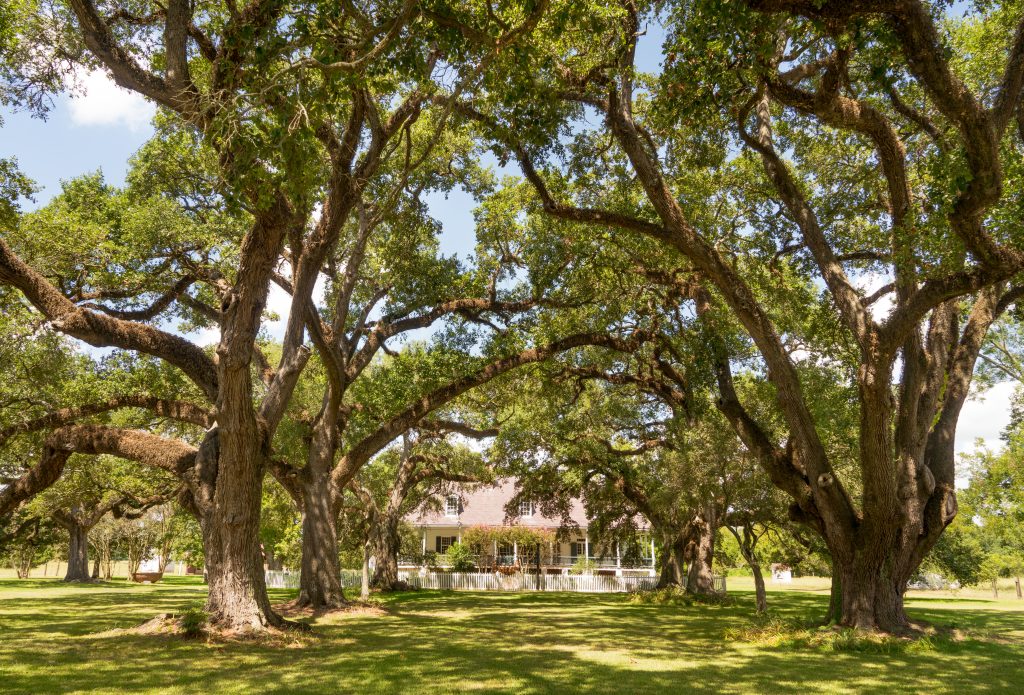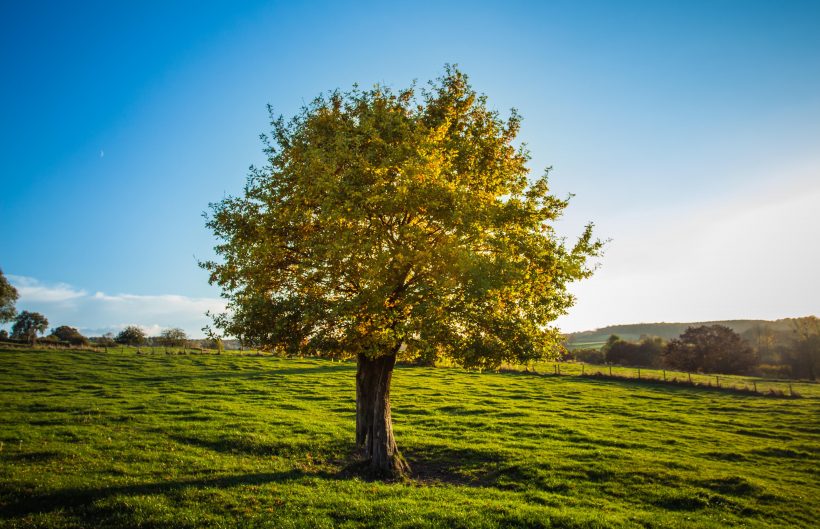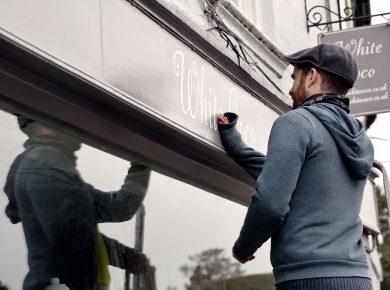Watching a tree grow, particularly one that you planted yourself, is a beautiful thing indeed. However, in some cases, without realising it, our trees can grow a little too tall for our liking. If left unchecked, you can end up losing much needed sunlight, or even have a large tree block the beautiful views from your bedroom window.
In any case, how do you keep a tree from growing taller? Is there a safe way to do it besides chopping the tree in half? And will a tree grow back if you do decide to cut the top off?
In this article, we’ll cover everything you need to know about managing the overall size of your trees.

How do you stop a tree from growing taller?
So, how do you stop a tree from growing taller? One of the most effective methods is pruning to reduce a tree’s height. However, it is much easier said than done. Even the most experienced of arborists have to put in extra care when it comes to pruning a tree to maintain its height.
Ultimately, the best way to take care of this issue is by avoiding it altogether (i.e., planting the right species of tree in the appropriate location). However, we understand that this advice is all well and good when you are already stuck with a large species of tree in your garden and want to find the safest way to handle it.
However, for future reference, when planting trees in your garden, make sure you take your time, research the species of tree, and ensure that it will not grow too tall for your liking.
How do I keep my tree small?
How do you keep your tree small? Again, proper pruning is the healthies means of maintain a trees ideal height, whilst keeping it structurally sound.
The perfect time to begin this process is when the tree is younger, or ideally, newly planted.
Of course, if your tree is long past its youth then don’t panic, you can indeed prune a mature tree down in height, though the process will take several years to get right. Just keep in mind that as a tree ages, they will have less energy in order to recover from a significant pruning session. Thus, doing so will likely have negative consequences and cause your tree more harm than good.
Our advice is to not chop the top of the tree off in order to keep it small. Certainly, the limbs will grow back, but they will be much weaker.
It may also be worth thinking about whether you’d be better off removing the tree altogether, and then replacing it with a smaller tree / more appropriate species for the location in question.
If that is out of the question and you want to keep your tree, then you must understand that you cannot stop a tree from growing taller, only limit its height.
As a rule of thumb, you do not want to remove more than ¼ of the tree’s canopy at one time as your tree will likely not have enough energy consumption to create the food that it needs to thrive. This will ultimately lead to your tree struggling, or dying altogether.
This is why, finding a reputable arborist to assist you, such as AB Trees, is recommended. That way, you can safely reduce a tree’s height over a gradual three-year period. For example, if you are looking to make your tree at least six-feet shorter, they can prune off two-feet a year without causing the tree any unnecessary trauma.
Of course, you can do it far sooner if you are desperate, but the tree will likely not survive.
Using a special pruning method, your arborist can help to ensure that a large tree works well in a smaller space. This requires frequent crown reductions and a thorough understanding of the intricacies of a tree’s structure (which varies from species to species).
Again, if too much is removed, you risk losing the tree altogether.
Another important thing to bear in mind is that certain tree species in Australia are regulated / significant. This means that you cannot readily remove or interfere with the tree because it is a protected species. If you aren’t sure, have an arborist help identify it for you.

Will a tree grow if you cut the top off?
Will a tree continue to grow if you cut the top off? The shower answer is yes. A topped tree can grow back, though it loses essential energy with this approach. As such, the tree will work over-time to regain the energy that is has lost, thus shooting up weaker, thinner, vertical sprouts in order to gather as much sunlight as possible. This, ultimately results in a weaker tree with an odd-looking shape at the top—both an eye-sore and an unhealthy tree, which isn’t ideal.
If you are reading this too late and you’ve already gone and topped your tree, here’s some tips on how to repair and reshape it over time:
- Be patient and wait for the new shoots to establish. Once the tree has regained its original height, you can begin the pruning process…
- Before you start chopping however, look for the dominant branches in your canopy (aka leaders). These should be the tallest, strongest looking branches absent signs of damage and decay
- Leaving the dominant branches, and some shorter, stronger sprouts, you can begin to cut the weaker sprouts down to the collar of the trunk
- Repeat this process several times over the next four to six years, remembering to consistently trim the sprouts left behind in order to help train them in the right direction
- It’s a long process, but over the years, your topped tree can make a full recovery and look beautiful and strong once more
Conclusion
It’s important to know the meaning of tree lopping, topping, and pruning, including their key distinctions and how they can affect your tree. The height can be limited, but it must be done with great care. Again, find the local professionals and seek out their advice on this matter before you grab the garden-sheers and start going crazy with it.










